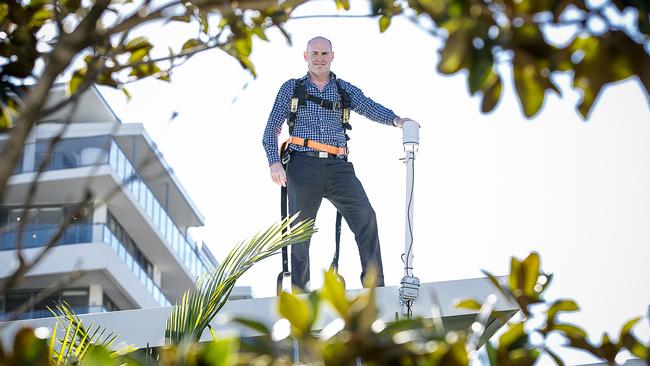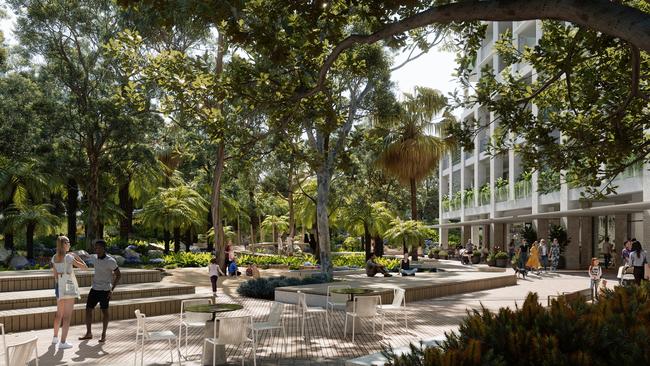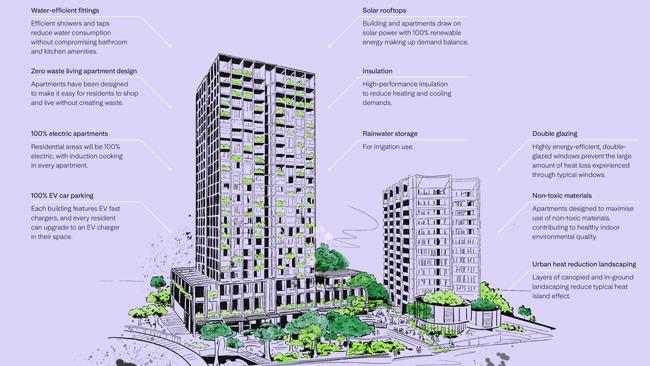Mulpha, UNSW release plan to reduce urban heat in Norwest development
A northwest Sydney suburb could soon see its urban heat reduced by two degrees. Find out how.

Hills Shire
Don't miss out on the headlines from Hills Shire. Followed categories will be added to My News.
A Sydney suburb could see its sweltering summer temperatures lowered by two degrees in a bold bid to reduce urban heat through a combination of eco-friendly buildings, infrastructure and landscape design.
In a two-year long research study, Norwest developer Mulpha worked in conjunction with the University of NSW (UNSW) built environment school to address how Norwest, a rapidly urbanising suburb in northwest Sydney, could tackle its urban heat and reduce overall temperatures.
Their target is to lower Norwest’s urban heat island effect by two degrees, which would deliver significant cost savings in energy as it reduced the need for airconditioning in businesses, public spaces and homes.
Urban heat islands form as vegetation is replaced by asphalt and concrete for roads, buildings, and other structures necessary to accommodate growing populations in Sydney’s booming suburbs. The asphalt and concrete absorb and release more lingering heat.
To tackle Norwest’s urban heat, Mulpha adopted a multi-pronged approach, covering the landscape, colours, materials, and how vegetation could be reincorporated.

The buildings use light coloured materials throughout for high solar reflectivity, as well as using awnings, screens and external shading structures.
For example, the design for the 81-apartment ‘Lacebark’ building features curved balconies and angled blades, which the developer says bring sunlight in the winter and protection from the sun in the summer.
There is also a plan for substantial rewilding of the land surface, with a high percentage of deep soil planting and canopy cover, as well as tree planting in both private and public spaces.


That includes a planned open public plaza, linking the towering apartment buildings. When complete, the plaza would feature a wild botanical garden — counting towards the developer’s commitment to 70 per cent of open green space within the precinct.
Mulpha’s head of developments, Tim Spencer, said the collaboration with UNSW was key to understand how development can influence the microclimate in Norwest through careful planning and design.
“The design considerations adopted at an early-stage in any development will have a major impact on the climate variability and liveability in urban environments such as Norwest,” Mr Spencer said.
“Effective collection of on-the-ground data and analysis by world leading experts is central to our vision for Norwest as a smart city that leads the way in urban design.
“A more liveable urban environment is also a better business and living environment that can deliver energy cost savings and ensure Norwest is a great place to live and work in all respects.”

According to Dr Negin Nazarian, a senior lecturer at UNSW’s school of built environment, the two years of monitoring and analysing Norwest’s microclimate from a network of 15 environmental sensors around the precinct could deliver broader results for other Sydney suburbs.
“Heatwaves are becoming more frequent and severe, which has serious consequences for public health, liveability and functionality of urban environments. In Australia, heatwaves kill more people than any other natural disaster,” Dr Nazarian said.
“With the increased rate of urban development, city and precinct scale climate is dramatically changed, resulting in additional warmth brought about by the urban heat island effect,” he added.
“It is paramount that we understand and closely monitor not only the climatic factors, but also the urban design characteristics that impact human health and wellbeing in the face of such heat events, and further promote smart city strategies to address this.”




